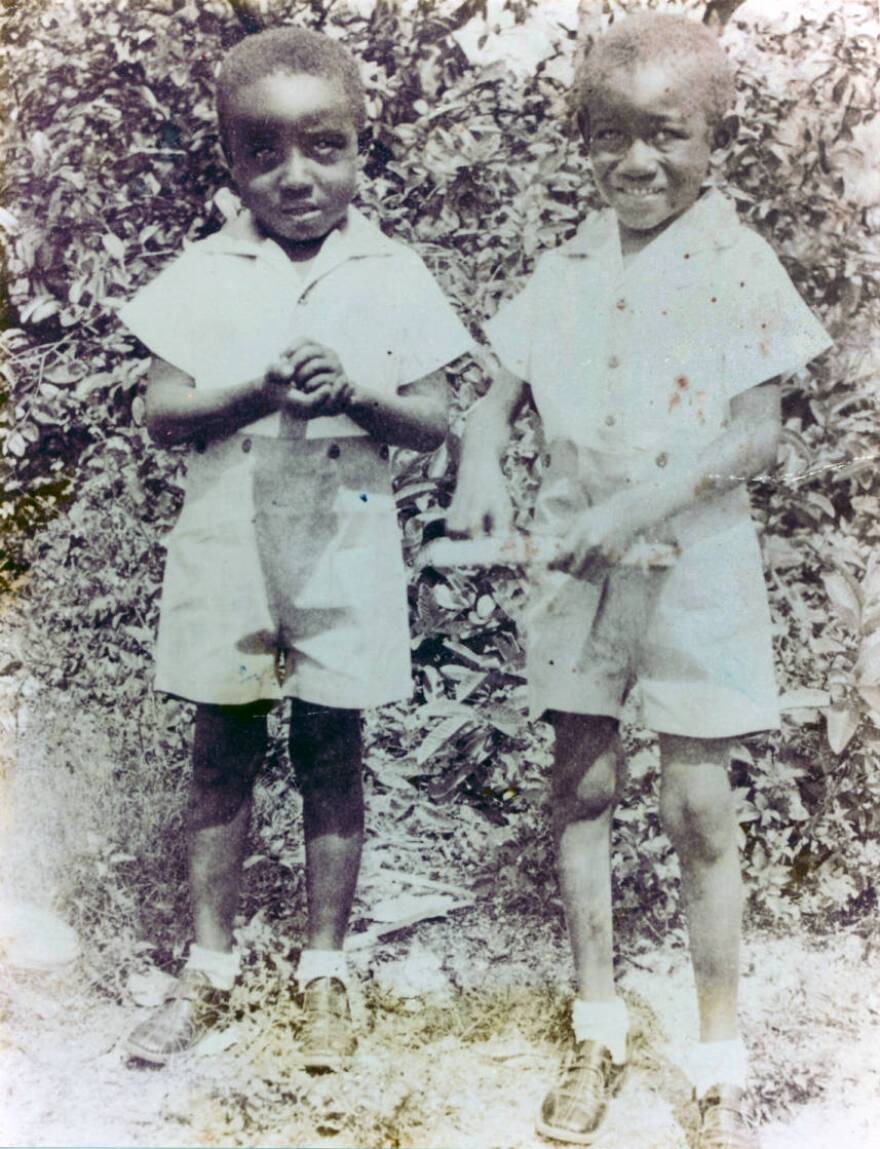A century ago, Florida's Sanibel Island was a rugged tropical outpost. Few were hearty enough to brave the heat, the isolation and mosquito swarms.
Yet a husband and wife saw potential in the salty soil.
“Isiah and Hannah Gavin came to Sanibel around 1917,” said Kenneth Gavin, one of their grandchildren.
“At that time, Sanibel was known for farming tomatoes and collard greens and beans and potatoes. And then, of course, you had the hurricanes that destroyed Sanibel for farming. And so then my dad and everybody else had to do something different.”

The Gavins were among the first Black families to settle on Sanibel. The Walkers, Pearl Alice and Harry, were another family.
The families became intertwined by marriage.
“The Walkers had several girls and my dad married one of them: Elnora. Then, after that, there was just a slew of Gavins,” said Kenneth, the fourth of 20 children of Edmond and Elnora.
His brother, Eugene Gavin, was the fifth child.
“We would be considered a founding family,” said Eugene. “Even some of the white families that were here on Sanibel, if it wasn't for the Gavins and the Walkers, they wouldn't have been able to stay because we supported them so much.”

Edmond Gavin was a hard worker, his sons recalled. He instilled his work ethic in his children. Before and after school, the Gavin kids collected the island's world famous seashells to be sold as souvenirs.
“When I say the whole family, I mean anyone that was old enough to pick up the shell and put it in a bucket,” recalled Kenneth. “Someone from the Shell Factory would come over periodically on Saturday, and then we had all these bushels of shells.”
However, not all memories were as picturesque. This was Florida, the segregated South, midcentury. The children of Sanibel went to separate elementary schools: one for whites, another for blacks.

“We walked to school and the white kids rode to school on the bus,” remembered Kenneth. And when it rained, we'd "get off the road so we wouldn't get splashed. But now the bus driver and her husband were good friends of our family.”
“Yet she couldn't pick us up and give us a ride. … But that was the law.”
The bus driver was Olive Rhodes. Her husband, Henry Rhodes, was friends with their father Edmond, recalled the brothers.

“I even remember them going alligator hunting with two of Hendry Rhodes' kids and I was on the back of the truck, and they were gonna’ put the alligator on the back,” Kenneth said.
He told the group, “ ‘I'll walk back home first, I'm not gonna ride on the back of a truck with no kind of alligator. ‘And they let me ride up front.”
Despite segregation, the Gavin brothers said there was a closeness among most islanders.
“It's strange the way things were,” said Kenneth. “Blacks and whites got along fine.”
Even back then, many Sanibel residents came from northern states“ and so they were familiar with the way integration worked," he said. "Of course you had whites that were born and raised here on Sanibel but for some reason, things were different.”

For two years after high school, Kenneth drove for J.P. Carter Transfer company to save money for college.
The company was the 1950s version of Amazon for Sanibel residents, who ordered everything from “burros to bras,” for 25 cents per item, 50-cent minimum, as described in an account in The Fort Myers News-Press.
The article went on, "Steel drums, furniture, cognac, lawnmowers, laundry and luggage are run of the mill assignments."
This was pre-Sanibel causeway, which opened to traffic in 1963. Most islanders could only leave Sanibel by boat.
The couple behind J.P. Carter trucking, Paul and Fanetta Stahlin, who were white, came to feel like family for Kenneth. When he left for college they would send him a weekly gift of $10.
Still, some islanders were racist, and it restricted the freedoms of Black residents including the ability to build generational wealth.
“When I was here, Blacks couldn't buy land on Sanibel,” Kenneth said. “If that was the case, we could have bought land when it was $100 a lot.”
Yet, Sanibel institutions were among the first in Lee County to be integrated. In the early 1960s, a priest at Saint Michael’s made the church the first in its diocese to be racially integrated, according to the church's website.

And, the island’s elementary school was the first integrated school in Lee County. Four of the five Black children who began attending the Sanibel school were Gavin children, said a 1964 article from The Fort Myers News-Press.
The older Gavin brothers left the South to build the kind of lives they dreamed of for themselves. Kenneth became a lawyer and a pastor. Eugene joined the Air Force and moved to Colorado.
“I said to never go back to Sanibel. Mosquitoes, no girls. And it just seemed like it was a bad place to be,” said Eugene.
But Eugene and Kenneth Gavin, now in their eighties, were drawn back to Southwest Florida. And it was Eugene who chose to live on Sanibel.
“Even though the mosquitoes and everything else was here, I just decided to come back here,” said Eugene. “I feel at home. I know I'm home. You know, I respect people and they respect me. And I think it's love there too.”
Copyright 2024 WGCU. To see more, visit WGCU.



